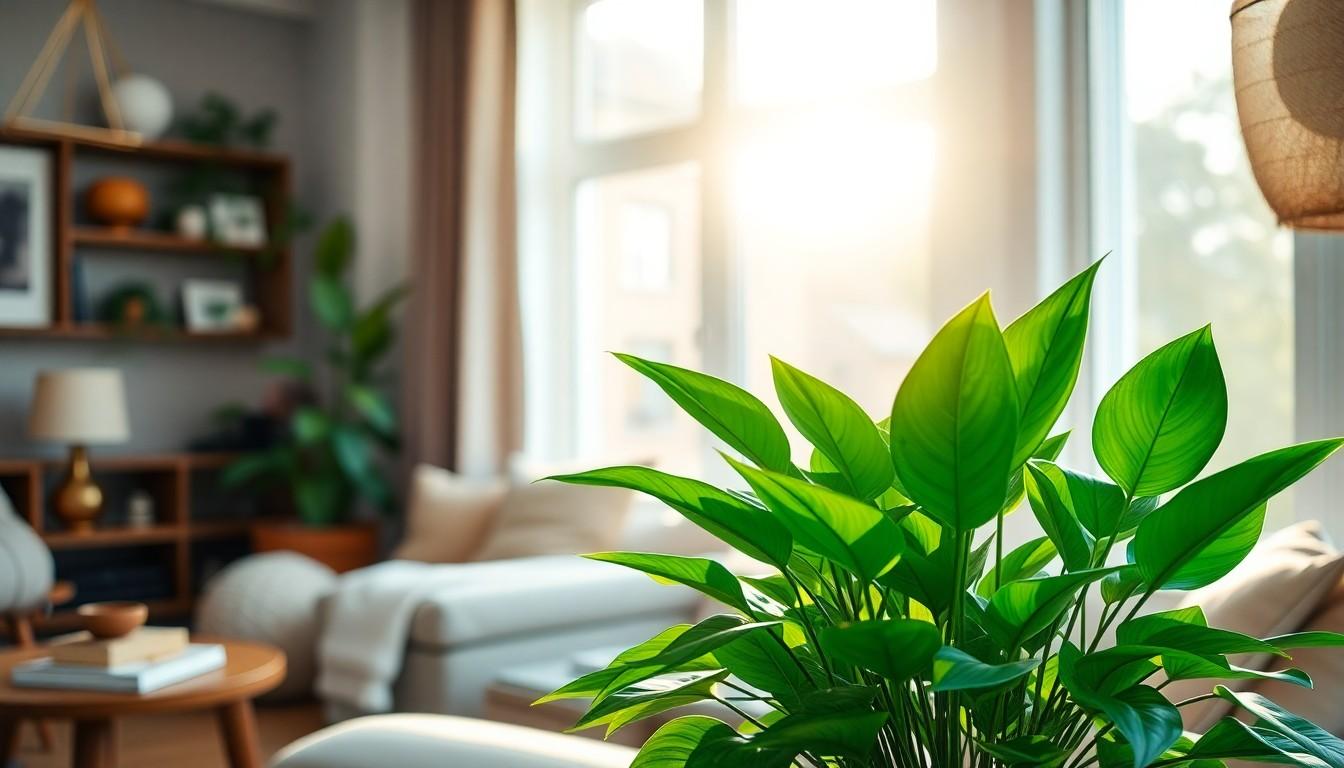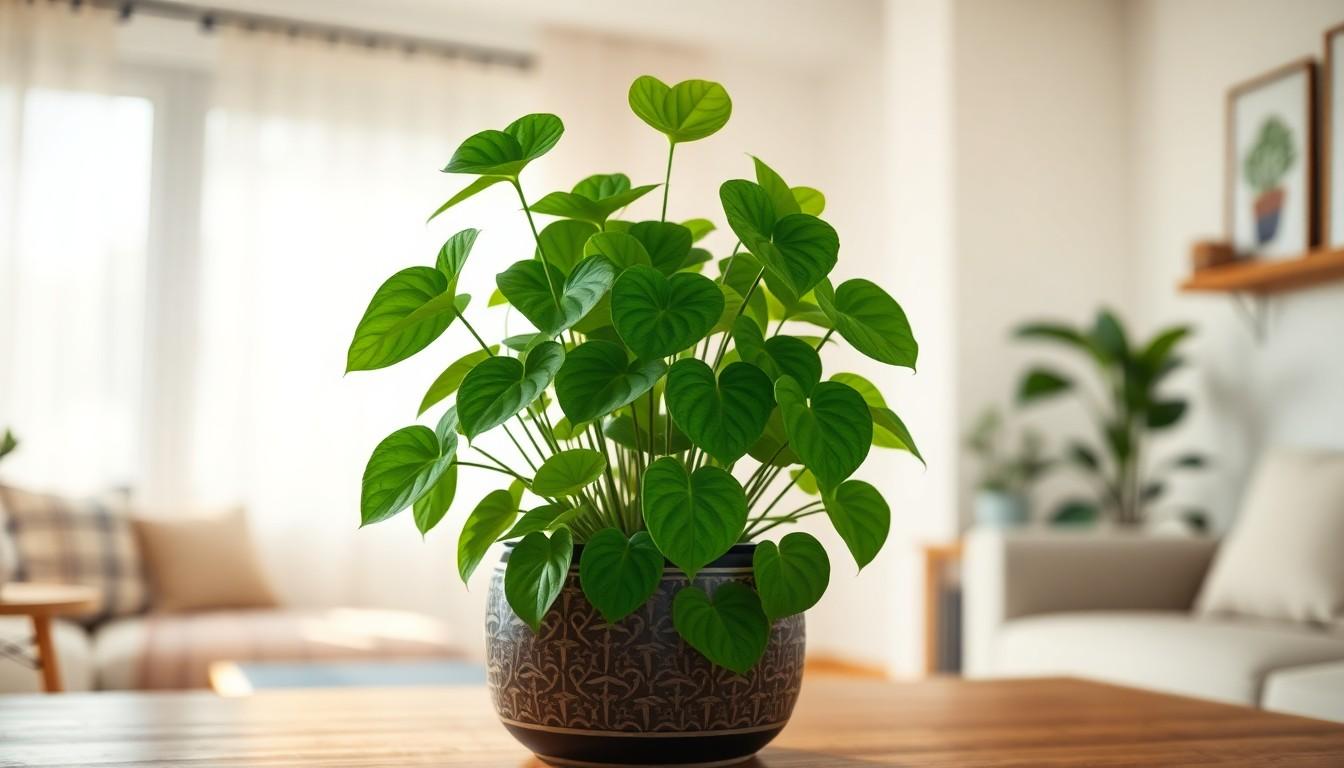If you think keeping a money plant indoors is just about luck, think again! This resilient green companion not only adds a touch of nature to any room but also thrives with a little TLC. With its heart-shaped leaves and air-purifying abilities, it’s like having a tiny superhero in your home—minus the cape.
Money Plant Care Indoor
Money plants, also known as Pothos or Epipremnum aureum, thrive in various indoor environments. Heart-shaped leaves provide a lush, vibrant appearance that enhances any room. These plants can adapt to low light conditions, making them suitable for spaces lacking direct sunlight.
Watering practices play a crucial role in money plant care. It’s best to let the soil dry slightly between waterings to prevent root rot. Overwatering often leads to yellowing leaves and weakened stems. Fertilizing every 4 to 6 weeks during the growing season promotes healthy growth.
Humidity impacts the plant’s development significantly. Money plants prefer higher humidity levels, yet they can tolerate standard indoor conditions. Mist the leaves occasionally to boost moisture, especially in dry climates or during winter months.
Pests pose a potential risk to money plants. Common pests include spider mites and mealybugs. Regularly inspecting the plant allows for early detection and treatment, ensuring its continued health.
Pruning encourages fuller growth and keeps the plant manageable. Trim the stems back to promote denser foliage and control its size. This practice not only maintains aesthetics but also reduces the risk of pests.
Overall, money plants serve as both decorative and functional indoor plants. Their low maintenance requirements and air-purifying qualities contribute to a healthier living space. Implementing proper care ensures that these plants flourish, offering beauty and benefits throughout the home.
Ideal Conditions for Growth
Money plants thrive in specific environmental conditions. Providing the right balance of light, temperature, and humidity ensures healthy growth.
Light Requirements
Bright, indirect light promotes optimal growth for money plants. These plants tolerate low light but flourish with about 6 to 8 hours of diffused sunlight daily. Positioning them near windows with filtered light enhances leaf variegation and richness. Too much direct sunlight can scorch the leaves, so maintaining a balanced exposure is crucial. When light conditions vary, adjusting their placement can help achieve desired growth.
Temperature and Humidity
Temperature plays a significant role in money plant health. Ideal temperatures range from 65°F to 85°F. When temperatures drop below 50°F, growth can slow significantly. High humidity levels benefit these plants, mimicking their native tropical environment. Maintaining humidity around 40% to 60% helps prevent leaf browning and curling. Regular misting or using a pebble tray with water can also increase humidity and improve overall plant vitality.
Watering and Feeding
Proper watering and feeding are essential for a thriving money plant. These practices contribute to its overall health and vigor.
How to Water Properly
Watering should occur when the top inch of soil feels dry. This method prevents waterlogging, which can lead to root rot. When watering, ensure the pot drains well, allowing excess water to escape. It’s best to use room temperature water, as this mimics the plant’s natural environment. Observing the leaves can also indicate when it’s time to water; wilting or yellowing leaves suggest a need for moisture. During the growing season, this routine maintains optimal hydration levels.
Fertilizing Your Money Plant
Fertilizing every 4 to 6 weeks during the growing season supports robust growth. A balanced, water-soluble fertilizer suited for houseplants works effectively. One part fertilizer to four parts water is a common dilution ratio. Apply the diluted solution after watering to prevent fertilizer burn. Reducing fertilizer frequency in the fall and winter aligns with the plant’s slower growth period. Monitoring signs of over-fertilization, such as leaf tip burn, aids in maintaining proper nutrient levels.
Common Pests and Diseases
Indoor money plants can face various pests and diseases. Early identification is crucial for maintaining their health.
Identifying Pests
Common pests include spider mites, aphids, and mealybugs. Spider mites often leave fine webbing on leaves, indicating infestation. Aphids, small and green or black, cluster on new growth. Mealybugs appear as white cotton-like masses on stems and leaves. Regular inspections reveal these pests before they become a larger problem. Observing yellowing leaves or a lack of growth can also signal pest issues. Maintaining cleanliness around the plant helps in spotting and preventing infestations.
Treatment Options
Using insecticidal soap effectively treats aphids and mealybugs. Applying neem oil acts as a natural pesticide against multiple pests. Regularly wiping leaves with a damp cloth removes unwanted pests. For severe infestations, isolating the affected plant is vital to prevent spreading. Regular follow-up treatments ensure pests do not return. Monitoring humidity levels also reduces the likelihood of spider mites. Keeping the plant healthy promotes its resilience against pest attacks.
Propagation Techniques
Money plants can be easily propagated using various techniques. Both stem cuttings and soil propagation methods are effective for growing new plants.
Stem Cuttings
Stem cuttings represent one of the most popular propagation techniques. Hormonal growth can flourish when cuttings measure at least 4 to 6 inches long, ensuring each cutting has several leaves. Cutting just below a node promotes quicker root development. After placing cuttings in water, wait for roots to grow to about 2 to 4 inches before transferring them to soil. Bright, indirect light fosters healthy growth during this process. Many plant enthusiasts favor stem cuttings for their simplicity and success rate.
Soil Propagation
Soil propagation offers another effective method for money plant growth. Rooting directly in soil allows plants to acclimate more easily to their usual environment. Using a well-draining potting mix, insert stem cuttings about 2 inches deep. Water the cuttings lightly, ensuring the soil stays consistently moist but not soggy. Place the pot in an area with indirect light to nurture root development. Many growers find soil propagation helps the plant establish a stronger foundation. Regularly monitoring moisture levels ensures healthy growth for the new money plants.
Aesthetics with Practical Benefits
Caring for a money plant indoors is a rewarding experience that combines aesthetics with practical benefits. By following essential care practices like proper watering and maintaining humidity levels, anyone can foster a thriving environment for this resilient plant. Regular inspections for pests and timely pruning contribute to its overall health and beauty.
With minimal effort, a money plant can flourish in various indoor conditions, enhancing air quality and adding a touch of nature to any space. Embracing these care techniques ensures that the money plant not only survives but thrives, becoming a cherished part of the home.



